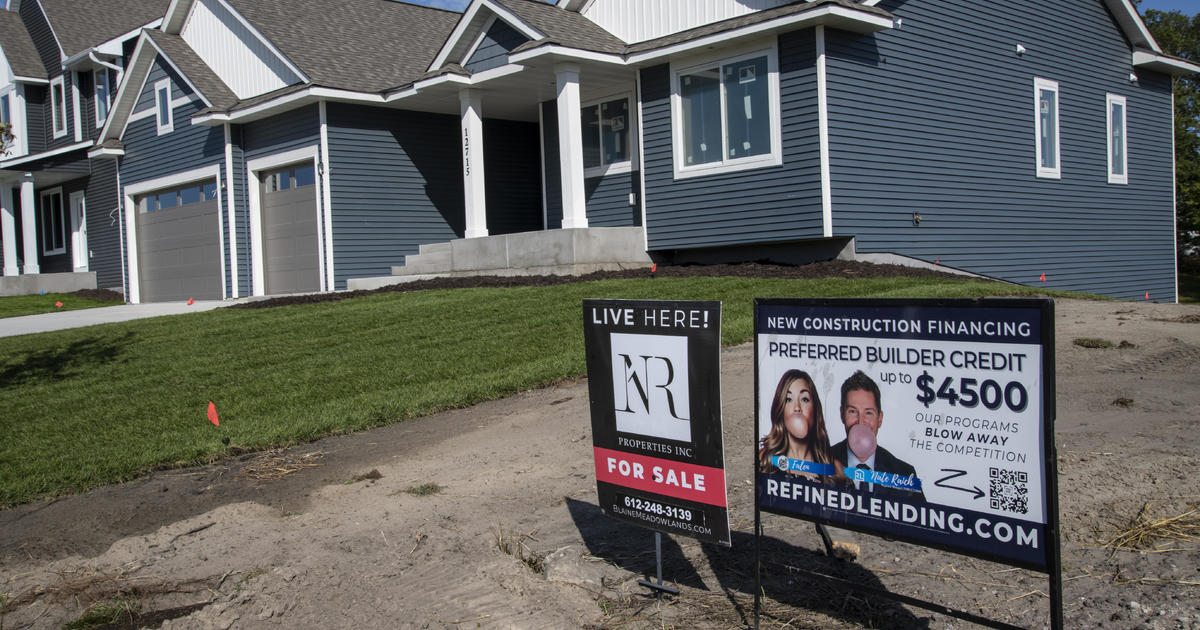More U.S. cities and states are starting to say “yes, in my backyard” as they struggle to meet the housing needs of growing populations.
The “YIMBY” movement is a political effort to tackle the country’s housing shortage by increasing the housing supply with strategies like changing zoning codes and other regulations that limit home density. The United States is millions of homes short of what’s needed to meet demand, according to the national nonprofit group “Up for Growth.”
Minneapolis resident Bernice Duncan has been searching for a new home with more space for more than five years. The telehealth professional works from home in a cramped two-bedroom apartment she shares with her two adult sons.
“Everybody is not able to move freely, like you would in a in a house or, you know, having your own office space,” said Duncan.
During the years she’s been looking, property values have soared. With a $1,600 monthly housing budget, she says she’s been priced out of the market.
“It’s been a struggle,” Duncan said. “As the economy continues to grow, your paycheck don’t,” she added. “You’re not going to pay less than $2,000.”
Saying “yes” to more housing
Twin-Cities YIMBY was formed in 2023 to advocate for policies that will generate more affordable housing options for people like Duncan. The group supports the elimination of zoning restrictions to allow for more home density across the Minneapolis area.
“In the past five years, our median housing price has increased by $100,000, which is a huge increase” said Paige Kahle, a realtor who founded Twin Cities YIMBY along with colleagues Nichole Hayden and Meghan Howard.
YIMBYs have been building a coalition of pro-housing advocates across the country to counter those who say “not in my back yard,” known as NIMBYs.
“I think it’s getting easier. But literally when you go to the local meetings, the city council meetings, planning commission meetings, there’s still NIMBYs that are very loud and very organized and often kind of angry because they don’t want this kind of housing near them,” said Kahle.
But without a plan to bring housing costs down, Kahle says the shortage is hurting home buyers and renters alike.
“They’re paying 50% of their income, 60% of their income on housing, which just isn’t sustainable,” she said. ”We need more housing and we need it quickly,” said Kahle. “Traditionally, how we’ve addressed the housing crisis is through subsidies, massive subsidies to bring down the cost of housing for folks. But there just aren’t enough subsidies in the world to do that. So, we really need to look at these other mechanisms to increase the density and lower the cost of housing.”
Minneapolis 2040: The city’s plan
Addressing these concerns is the goal of the Minneapolis 2040 Comprehensive Plan. Passed in 2018, the ambitious bipartisan bill implemented historic zoning reforms to increase the number of available housing units including:
- The elimination of single-family-only zoning to permit build duplexes, triplexes and fourplexes in all neighborhoods.
- Height minimums for new residential buildings in high-density zones.
- The elimination of minimum parking requirements for new housing developments.
The plan has faced opposition from some homeowners who argue that increased density could undermine the character and charm of single-family neighborhoods.
“The 2040 Plan will hurt the uniqueness and architectural heritage of many neighborhoods,” said one opponent during a 2018 City Planning Commission meeting.
Implementation of the plan was paused in 2022 after environmental groups filed a lawsuit arguing the plan may have severe unintended consequences to the environment. In May, a state appeals court ruled to lift an injunction on the plan, and just last month the Minnesota State Supreme Court denied a petition for further review of the objections, clearing the way for the plan to continue.
“People want a place that they can live, [where] they can afford to raise their family, that’s safe and affordable. So, it’s really been part of the … regional conversation as well as the national conversation,” said Alene Tchourumoff of the Minneapolis Federal Reserve.
Over the next decade, the Minneapolis Fed is using multiple data sources to track the economic impact of these changes made as part of the 2040 plan.
“We really wanted to have a deeper understanding of what the effects of the policy change would be, recognizing the fact that these important policy changes in housing often take a long time to actually manifest,” said Tchourumoff.
There is some promising early data. According to a report by the Pew Charitable Trust, between 2017 and 2022, nearly 21,000 new units were permitted in Minneapolis — most in buildings with 20 or more units. In that same time, rents in the city rose by just 1% — far less than the rest of Minnesota, which saw a 14% rent increase.
Deregulation across the country
As Minnesota lawmakers consider expanding these rezoning reforms statewide, other states such as California, Oregon, Massachusetts and Montana have already implemented similar YIMBY policies.
The changes in Minneapolis are already making a difference for residents like Rebecca Hemmans, who became a first-time homeowner at 67 after viewing nearly 100 listings.
“I had this dream about living in a single-family home and sitting on my porch with my table of lemonade and glasses for the neighbors to wave at,” Hemmans said.
To accommodate her budget, she chose to adjust her dream — instead of a single-family home, she purchased an attached townhome, and she’s happy with the compromise.
“I don’t have to check with the landlord to say, “Hey, can I do this or do that?” she said. “If I want to paint my walls orange, I can do that.”

